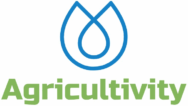If you’re interested in sustainability and urban agriculture, aquaponics may be the perfect solution for you. Aquaponics is a hybrid of hydroponics (growing plants in water) and aquaculture (raising fish in tanks). It combines the two to create a closed-loop system that is both efficient and environmentally friendly.
In an aquaponic system, fish are raised in tanks and their waste is used to fertilize the plants growing in the system. The plants, in turn, filter the water for the fish, creating a symbiotic relationship. This allows for the production of fresh, nutrient-rich produce and protein from the fish in a small, urban environment.
There are many different types of fish that can be raised in an aquaponic system, each with their own unique characteristics and purposes. Some common options include tilapia, catfish, and trout. Tilapia are a popular choice due to their fast growth rate and ability to tolerate a wide range of water conditions. Catfish are also a hardy option, with a high tolerance for poor water quality. Trout are a cold-water species and require a more specialized setup, but they are a high-quality protein source.
One of the major benefits of aquaponics is its sustainability. It uses significantly less water and resources than traditional agriculture, making it an efficient way to grow fresh food and raise protein. In addition, aquaponics can be practiced in a variety of urban settings, including rooftops and basement systems, making it a versatile solution for those looking to grow fresh produce and raise protein in an urban environment.
If you’re interested in trying aquaponics, there are many resources available to get you started. From pre-made kits to DIY plans, there are options to fit every budget and experience level. So why not give aquaponics a try and start growing your own fresh food and raising protein today?





